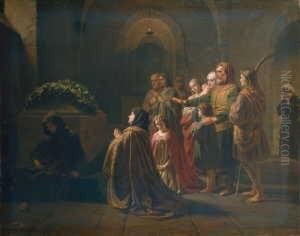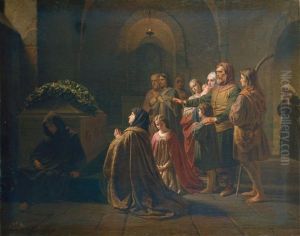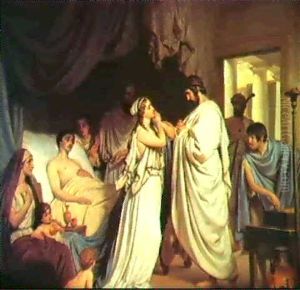Ludwig Rosenfelder Paintings
Ludwig Rosenfelder was a German painter born in 1813. While not as widely recognized as some of his contemporaries, Rosenfelder's work contributes significantly to the 19th-century art scene, particularly within the Romantic movement in Germany. His artistic journey reflects the broader transitions and stylistic developments of the period, navigating through the realms of Romanticism with a distinctive touch that often explored the interplay of light and nature, subjects typical of the era's artistic endeavors.
Rosenfelder's education and early career were marked by traditional academic training, a foundation that grounded his work in the technical proficiency and classical subjects favored by art institutions of the time. However, as his style evolved, so did his interest in capturing more than just the physical world. He sought to imbue his landscapes and portraits with a sense of emotion and ethereal beauty, characteristics that align him with the Romantic sensibilities of seeking the sublime and expressing the inner self.
Throughout his career, Rosenfelder exhibited his work in various prestigious venues, including the Berlin Academy, where he gained recognition amongst his peers and the art-loving public. His landscapes, often depicted with a meticulous attention to detail and a soft, evocative use of color, show his fascination with the natural world and its capacity to evoke profound feelings in the viewer. This thematic interest was common among Romantics, who saw nature as a direct pathway to experiencing the sublime and transcendent.
Despite his contributions to the art world, Ludwig Rosenfelder's name has not endured as prominently in art history as some of his contemporaries. This oversight may be attributed to the overshadowing fame of other artists of the time or perhaps to the subtle, introspective quality of his work, which, while profound, does not always command the immediate attention that more dramatic or revolutionary works do. Nevertheless, his paintings remain valuable examples of 19th-century German Romanticism, offering insight into the era's artistic movements and the thematic concerns that drove artists of the time.
Ludwig Rosenfelder passed away in 1881, leaving behind a body of work that, though perhaps not as celebrated as that of some of his peers, continues to offer a window into the soul of Romantic art. His dedication to capturing the beauty and complexity of the natural and emotional world contributes a unique voice to the narrative of 19th-century European art.


